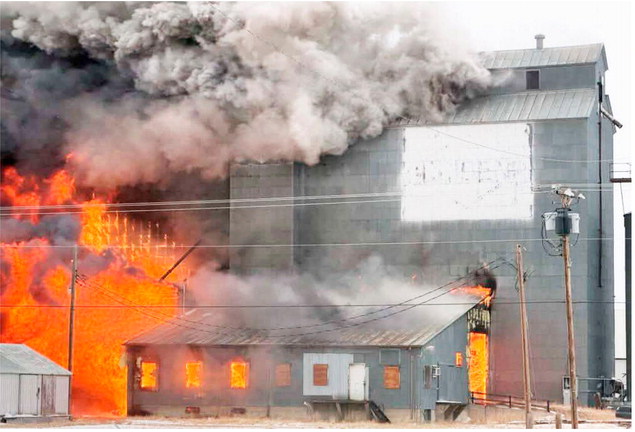Montana Poll Shows Voters Unhappy With Politicians
Generally speaking, Montanans overwhelmingly plan to vote in the upcoming election, and they approve of their local law enforcement and public lands.
They don’t know much about the state’s provision of Indian Education for All and may not even know in which Congressional district they live.
And Montanans are dissatisfied with Congress’ performance and don’t trust the mainstream media.
These were just some of the key takeaways from the 2022 Mountain States Poll conducted by Montana State University — Billings and led by faculty member Hope Dewell Gentry. It was the 35th time the poll has been conducted. While many of the topics and questions showed a clear preference, other other political races remain too close to call.
The random-dialing method surveyed 343 Montana residents in October and has an overall margin of error of 5.3 percent.
The Mountain States Poll was established in 1989 and has become one of the few publicly available polls still remaining in the state. Overall, the poll results tilt toward Republican candidates, but voters parted way with their politicians when it comes to issues of abortion and reproductive freedom. Similar to many other states, the poll also shows that Democrats face an uphill challenge in the midterms with President Joe Biden’s overall approval rating standing at 21.7 percent with 58.4 percent saying they disapprove. That could spell trouble for Democrats in the state because 82 percent percent of those surveyed said they planned to vote next month.
Voters are also unhappy with Biden’s plan to forgive college student debt with 45 percent saying they disapprove, 39 percent say they approve and the rest remaining undecided.
But dissatisfaction with Biden was eclipsed by how Montanans viewed the United States Congress, with only 16 percent approving and 55 percent disapproving.
At the state level, Montana Gov. Greg Gianforte’s approval rating fared better, with 47 percent of Montanans approving of his work while similarly sized groups either disapproved or were undecided, with a larger percentage of women and college-educated voters showing dissatisfaction with the governor.
Congressional Races
The poll may also give clues about how November’s election will shape up in the Treasure State.
Montana’s two Congressional districts — one additional seat was created after the new census numbers were released — show that nearly two-thirds of voters were uncertain in which district they lived.
While the Mountain States Poll showed Republican Ryan Zinke in the lead over Democrat Monica Tranel 34 to 25 percent, the effect of Libertarian John Lamb (17 percent) and undecided voters (20 percent) make the race a toss-up.
Meanwhile, in Montana’s eastern District, current Republican Congressman Matt Rosendale earned mixed reviews for his first term in Congress. Twenty-nine percent of citizens said they approve of the job he’s doing while 35 percent said they disapproved and 19 percent neither approve or disapprove.
That translated into an equally murky picture when it comes to predicting the next winner. Rosendale appears to hold a slight edge over three other candidates, but 17 percent of citizens said they still don’t know, leaving predictions uncertain. Rosendale captured 35 percent of the support, while Democrat Penny Ronning has 17 percent, Libertarian Sam Rankin has 5 percent and independent Gary Buchanan has 21 percent.
Senate Ratings
Even though Montana does not currently have a U.S. Senate election, it showed mixed results for both Montana’s senators.
Residents seem just slightly more satisfied with Sen. Steve Daines’ performance than those who disapprove, but the margin remains close with one-in-five voters neither approving or disapproving. Forty percent said they approved of the job the Republican is doing while 32 percent did not.
Meanwhile, approval ratings for Montana’s senior Sen. Jon Tester, a Democrat, show divided opinions about his job performance. Forty-one percent of the respondents said they approve, while 39 percent said they did not and only 10 percent said neither.
On The Issues
Montanans generally speaking trust law enforcement, with 87 percent saying they trust the local police or sheriff’s office, with only 11 percent not trusting.
However, residents were much more cynical when it came to trusting other institutions. For example, when asked whether they trust “representatives’ ability to govern efficiently in a non-divisive manner,” 37 percent said they trust their leaders, while 42 percent didn’t trust them.
The numbers were even worse when it came to mainstream media. Only 9 percent of those surveyed said they trust the media, with an additional 8 percent saying they neither trusted nor distrusted the media. Meanwhile 81 percent said they distrusted it.
Montanans also were split on whether they believe transgender residents should have the ability to amend their birth certificate with 53 percent saying they shouldn’t be able to change it, and 36 percent saying they should.
Montanans also were generally opposed to the United States Supreme Court’s decision to overturn Roe vs. Wade, with 53 percent disagreeing, while only 28 percent agreed. When asked for other details, 49 percent of respondents characterized themselves as “pro-choice,” while 33 percent said they were “pro-life” and the remaining saying neither or “it depends.”
Montanans were also strongly against book banning in schools, with 70 percent disagreeing with removing titles from public schools’ bookshelves and only 19 percent agreeing.
As for teachers, Montanans were evenly divided as to whether a teacher with a clean background check should be allowed to carry a gun into a classroom. Forty-seven percent said they agreed while 44 percent disagreed.
Montanans still largely support using the death penalty as a capital punishment with 70 percent supporting the policy.
Very few Montanans had ever heard of the Indian Education For All law, a mandate that requires education in public schools about Montana’s Indigenous people and tribes. Only 16 percent said they had heard of it, and less than 20 percent said they believed money set aside for it is being used effectively.
The poll also appeared to show that Montanans are stressed out. Eighty-nine percent said they agreed that there is a mental health crisis in the state.
And more than 9-out-10 respondents believe business in their community is struggling to find employees.
In one of the few results that has remained relatively stable and unchanged for years were the number of people who value protection of public lands. Ninety-five percent of officials agreed that leaders should protect public lands.

